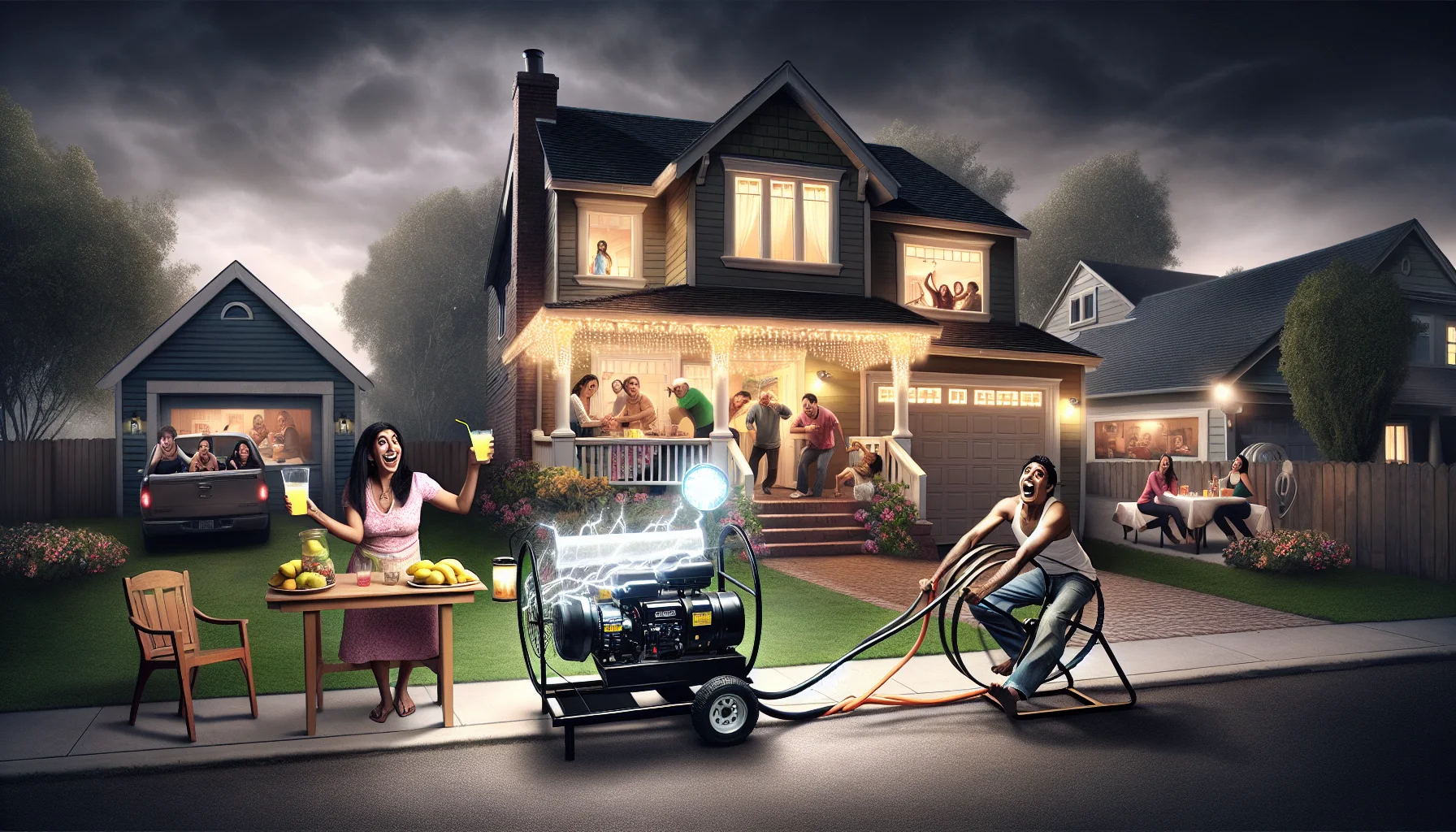Whole House Generators Category Quiz
Test Your Knowledge
Question of
Understanding Whole House Generators
Whole house generators, also known as standby generators, play a crucial role in ensuring uninterrupted power supply to a home during power outages. These generators are permanently installed outside the house and are automatically activated when the power goes out, providing a seamless supply of electricity. They are connected to the home's electrical panel and powered by an external fuel source, such as natural gas, propane, or diesel, making them capable of running for extended periods. Whole house generators are designed to handle the entire electrical load of a home, ensuring that essential appliances and systems, such as heating, cooling, refrigeration, and lighting, continue to operate smoothly, thereby offering homeowners peace of mind and convenience during unforeseen power disruptions.
Types of Whole House Generators
- Gas-Powered Generators
- Diesel-Powered Generators
- Natural Gas Options
How Whole House Generators Work
Whole house generators are designed to provide a seamless supply of electricity to your home during power outages, ensuring that your essential appliances and systems continue to operate without interruption. The basic operation of these generators starts with their ability to detect a power outage almost instantaneously. This detection is made possible through an automatic transfer switch that continuously monitors the electricity flowing from the grid. When a disruption in the grid power is detected, the switch automatically disconnects your house from the grid and signals the generator to start. Within seconds, the generator begins generating electricity, which is then routed back to your home's electrical panel and distributed throughout your house. This process ensures that your home remains powered until the grid power is restored. Once the grid power comes back on, the automatic transfer switch safely disconnects the generator and re-connects your house to the grid, allowing the generator to cool down and stand by until it's needed again.
Benefits of Installing a Whole House Generator
- Uninterrupted power supply
- Convenience
- Increased home value
Installation Process for Whole House Generators
The installation of a whole house generator is a comprehensive process that involves several key steps to ensure safety, compliance, and optimal performance. Initially, the process begins with selecting an appropriate location for the generator, which typically requires a stable, level surface away from any windows or vents to prevent exhaust from entering the home. Following this, a professional team will prepare the site, which may include pouring a concrete pad for the generator to rest on.
Next, electrical and gas connections are made, which must be performed by licensed professionals to adhere to local building codes and ensure safety. The electrical connection involves integrating the generator with the home's electrical panel through an automatic transfer switch, which safely switches the home's power source from the utility to the generator during an outage.
After the connections are established, the generator is then thoroughly tested. This testing phase includes running the generator to verify it properly engages when the power goes out and that it can handle the home's electrical load. Additionally, all safety features are checked to confirm they function correctly. Finally, homeowners are advised on how to maintain their generator, covering routine inspections and servicing to ensure the generator operates reliably for years to come.
Maintenance Tips for Whole House Generators
- Regularly inspect your generator for any signs of wear and tear or damage. This includes checking for leaks, rust, and loose connections.
- Ensure the fuel supply is adequate and check fuel levels before an expected power outage. Also, inspect the fuel quality, as stale or contaminated fuel can cause issues.
- Change the oil and filter according to the manufacturer's recommendations, typically after 100 hours of use or at least once a year.
- Check and replace air and fuel filters as needed to ensure efficient operation.
- Test the generator monthly to make sure it starts up and runs as expected. This also helps to lubricate the engine parts.
- Keep the area around the generator clear of debris and ensure it's well-ventilated.
- Inspect and clean the spark plugs regularly to prevent buildup and ensure smooth operation.
- Ensure the battery is charged and in good condition, as it's essential for starting the generator.
- Consult the user manual for specific maintenance guidelines and adhere to a scheduled maintenance plan.
- Consider a professional inspection annually to ensure your generator is in top condition and to address any potential issues before they become major problems.
Choosing the Right Whole House Generator for Your Home
| Model | Power Output | Fuel Type | Size | Cost |
|---|---|---|---|---|
| Generac Guardian Series | 22 kW | Natural Gas, Propane | 48 x 25 x 29 inches | $4,500 - $5,000 |
| Kohler Air-Cooled Standby | 20 kW | Natural Gas, Propane | 48 x 26.2 x 29 inches | $4,700 - $5,200 |
| Cummins QuietConnect | 22 kW | Natural Gas, Propane | 34 x 36 x 27 inches | $4,800 - $6,000 |
| Briggs & Stratton Fortress | 20 kW | Natural Gas, Propane | 48 x 34 x 31 inches | $4,600 - $5,500 |












